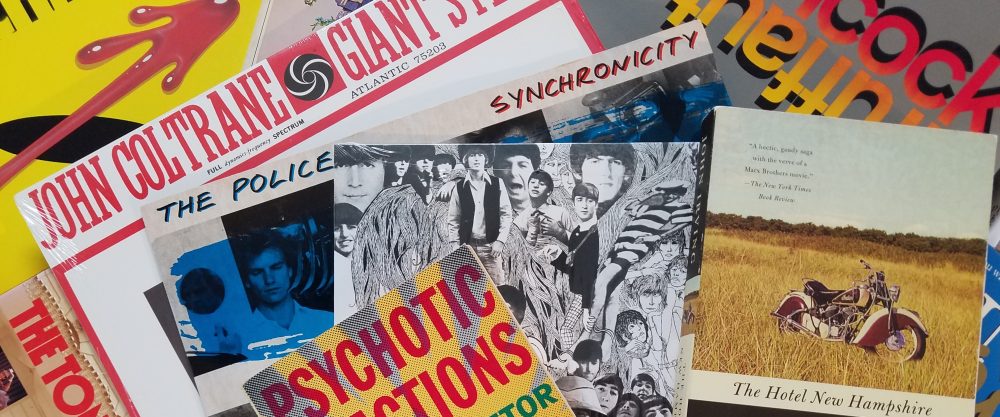
When Stanley Donen died late last month, the world lost one of the last remaining film directors of Hollywood’s Golden Age. He was almost never mentioned in the same sentence with his peers from that hallowed era – Hitchcock, Hawks, Huston, Welles, Chaplin, Wilder, Kazan, to name a few – probably because he specialized in a genre that has seldom been taken seriously: the big-budget movie musical. I dare say, however, that he was, in his own way, just as talented, accomplished, and influential as his more revered colleagues. After all, he did co-direct one of the universally acknowledged greatest films of all time, a rare distinction for a musical.
One look at Donen’s filmography reveals his strengths and interests, best summarized by Tad Friend of The New Yorker in a 2003 profile of the director: “He made the world of champagne fountains and pillbox hats look enchanting, which is much harder than it sounds.” The signature stars of Donen’s most well-known films – Gene Kelly, Fred Astaire, Cary Grant, and Audrey Hepburn – exemplify that ethos of charming, witty refinement perfectly.
But, a closer look at Donen’s films also reveals another overarching theme: joy, of all stripes, as evidenced by some of my favorite moments from his films:
“You’re All the World to Me,” Royal Wedding (1951)
The musical number that personifies the phrase “movie magic.” It’s got everything, starting with Fred Astaire’s Tom Bowen being so in love that he momentarily turns into Spider-Man. Donen and Astaire do such an incredible job on this number that the audience never thinks twice about it being completely stylistically different from the rest of the movie. Instead, it is simply proof positive that once the singing and dancing start, anything can happen in a musical. It’s genre that is built for this kind of whimsy, and Donen clearly loves that.
“Good Morning,” Singin’ in the Rain (1952)
Here is Donen the craftsman showing off in his own subtle way: with terrific framing and composition, great camera movement, and a minimum of cuts. Donen uses maximum shot lengths in order to let the performers fully do their thing, and the choreography complements both them and the plot. Every move that Kelly, Debbie Reynolds and Donald O’Connor make here is appropriate for this particular point in the story. This is the joy of watching three top-notch triple threats in peak form.
“Make ‘Em Laugh,” Singin’ in the Rain
A musical number that perfectly introduces and defines a character. We know exactly who Donald O’Connor’s Cosmo is after this, and we carry that knowledge with us for the rest of the movie: anytime he shows up, we know he could potentially be this funny, nimble, and charming at any moment. It’s no coincidence that this number is both inventive and hilarious and also tailored to O’Connor’s strengths. This is another moment from the Donen filmography where we revel in the joy of watching a expert performer operating at the highest level.
“Sunday Jumps,” Royal Wedding
My mom’s first question after I told her I’d recently watched this movie again: “Is that the one where he dances with the hat rack?” Please note that she did not ask “Is that the one where he dances on the ceiling?” That’s how good this number is. Donen and Fred Astaire take a potentially lame idea – dancing solo with a room full of inanimate objects – and activate it the fullest. This is a prime example of Donen’s and Astaire’s inventiveness, and another great illustration of character development through dance: Astaire’s Tom Bowen is both resourceful and a workaholic.
Jo Stockton’s Bohemian Dance, Funny Face (1957)
There are so many reasons why Funny Face is one of Donen’s best musicals, and most of them can be found in this number. Yet again, we have a dance that is tailored to a performer’s strengths, and also defines character. Audrey Hepburn’s Jo Stockton is thrilled to be out in Paris meeting the bohemian intelligentsia, and this dance is how she expresses that. It’s a great showcase for both Hepburn’s latent dance skills and her goofy sense of humor. Plus, the mise-en-scene is off the charts.
I would be remiss if I didn’t mention another highlight from Funny Face: two of the greatest shots of Audrey Hepburn ever put on film. Donen clearly loved working with A-list movie stars, and often did everything he could to make sure they looked their glamorous best. I would bet that no one ever looked as fabulous in any of his movies as Hepburn does here. Case in point: skip forward to the 3:29 point in this number and the 5:53 point in this sequence, and you will see Hepburn being even more photogenic and iconic than usual. (She must have liked working with Donen, as well: they went on to make two more movies together.)
